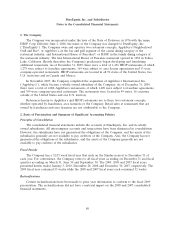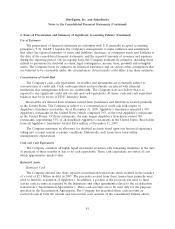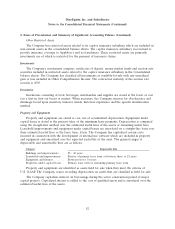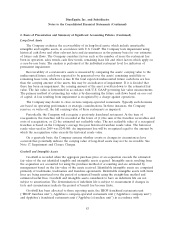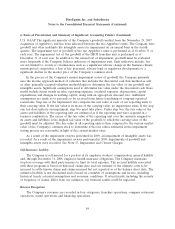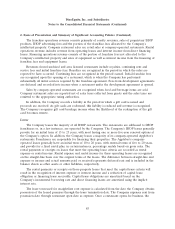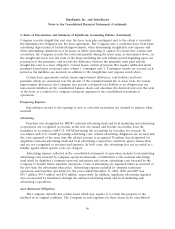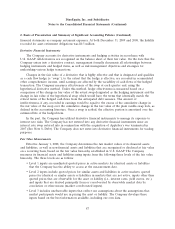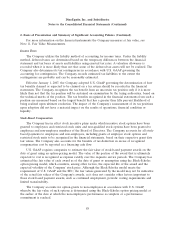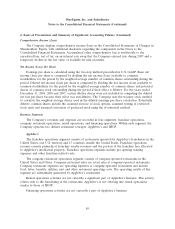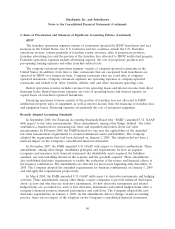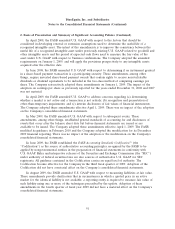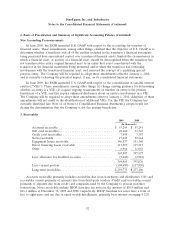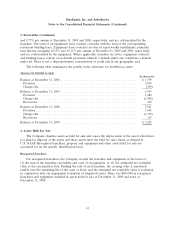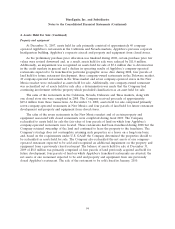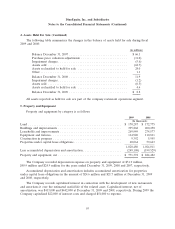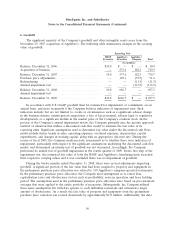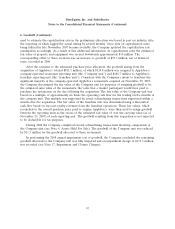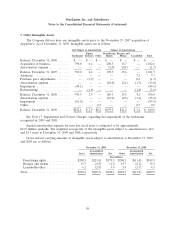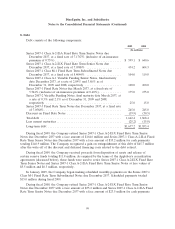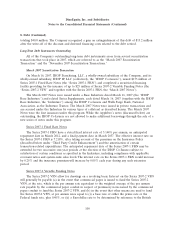IHOP 2009 Annual Report Download - page 109
Download and view the complete annual report
Please find page 109 of the 2009 IHOP annual report below. You can navigate through the pages in the report by either clicking on the pages listed below, or by using the keyword search tool below to find specific information within the annual report.DineEquity, Inc. and Subsidiaries
Notes to the Consolidated Financial Statements (Continued)
2. Basis of Presentation and Summary of Significant Accounting Policies (Continued)
IHOP
The franchise operations segment consists of restaurants operated by IHOP franchisees and area
licensees in the United States, two U.S. territories and two countries outside the U.S. Franchise
operations revenue consists primarily of franchise royalty revenues, sales of proprietary products,
franchise advertising fees and the portion of the franchise fees allocated to IHOP intellectual property.
Franchise operations expenses include advertising expense, the cost of proprietary products and
pre-opening training expenses and other franchise-related costs.
The company restaurant operations segment consists of company-operated restaurants in the
United States. In addition, from time to time, restaurants that are reacquired from franchisees are
operated by IHOP on a temporary basis. Company restaurant sales are retail sales at company-
operated restaurants. Company restaurant expenses are operating expenses at company-operated
restaurants and include food, labor, benefits, utilities, rent and other restaurant operating costs.
Rental operations revenue includes revenue from operating leases and interest income from direct
financing leases. Rental operations expenses are costs of operating leases and interest expense on
capital leases on franchisee-operated restaurants.
Financing operations revenue consists of the portion of franchise fees not allocated to IHOP
intellectual property, sales of equipment, as well as interest income from the financing of franchise fees
and equipment leases. Financing expenses are primarily the cost of restaurant equipment.
Recently Adopted Accounting Standards
In September 2006, the Financial Accounting Standards Board (the ‘‘FASB’’) amended U.S. GAAP
with respect to fair value measurements. These amendments, among other things, defined ‘‘fair value,’’
established a framework for measuring fair value and expanded disclosures about fair value
measurements. In February 2008, the FASB delayed for one year the applicability of the amended
fair-value measurement requirements to certain nonfinancial assets and liabilities. The Company
adopted the requirements that had been deferred on January 1, 2009. The adoption did not have a
material impact on the Company’s consolidated financial statements.
In December 2007, the FASB amended U.S. GAAP with respect to business combinations. These
amendments, among other things, established principles and requirements for how an acquirer
recognizes and measures in its financial statements the identifiable assets acquired, the liabilities
assumed, any noncontrolling interest in the acquiree and the goodwill acquired. These amendments
also established disclosure requirements to enable the evaluation of the nature and financial effects of
the business combination. The amendments are effective for fiscal years beginning after December 15,
2008. The Company adopted the amended requirements for business combinations on January 1, 2009
and will apply the requirements prospectively.
In March 2008, the FASB amended U.S. GAAP with respect to derivative instruments and hedging
activities. These amendments, among other things, require companies to provide enhanced disclosures
about (a) how and why they use derivative instruments, (b) how derivative instruments and related
hedged items are accounted for, and (c) how derivative instruments and related hedged items affect a
company’s financial position, financial performance and cash flows. The Company adopted the new
disclosure requirements on January 1, 2009. As the amendments did not change current accounting
practice, there was no impact of the adoption on the Company’s consolidated financial statements.
90


